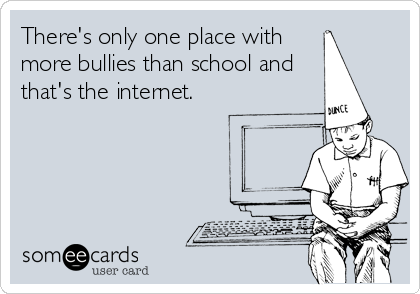
Over the summer holidays the tragic news of Hannah Smith hit headlines across the country after the 14 year-old committed suicide following aggressive online bullying.
Hannah’s story shows just how detrimental online bullying can be and how, when hidden behind the safety of an anonymous screen, users can be particularly aggressive.
Although Hannah’s is an extreme case, online bullying is not rare and worryingly it seems to be accepted as something that is inevitable. In a recent survey 90% of social media-using teens who witnessed online cruelty say they have ignored the mean behaviour on social media. In total 38% of young people have been affected by cyber-bullying.
So what is cyber-bullying. Stopcyberbullying.org defines it as, “when a child, preteen or teen is tormented, threatened, harassed, humiliated, embarrassed or otherwise targeted by another child, preteen or teen using the Internet, interactive and digital technologies or mobile phones. It has to have a minor on both sides, or at least have been instigated by a minor against another minor. Once adults become involved, it is plain and simple cyber-harassment or cyber-stalking. Adult cyber-harassment or cyber-stalking is NEVER called cyber-bullying.”
For children, cyber-bullying can be particularly difficult to deal with as abusers are able to reach them at their home at any time, and these may be the same people who bully them face-to-face in school as well.
Following Hannah’s death her family have called for tighter restrictions to be in place on social networking sites, to protect children like Hannah.
Joanne Smith, Hannah’s 16-year-old sister, said: “If they had bigger boundaries on the site or on the internet we wouldn’t be able to get bullied and nobody would get bullied.
“It would only happen at school, like face to face, and then they are not hiding behind the screen and you know who it is.”
As children go back to school after the summer holidays a large proportion of them will face bullies, in school and online through social media.
There are a lot of resources available for children who are being bullied online; here we have compiled some useful tips to help deal with cyber-bullies. If you are the victim of bullying or you think your child may be the victim of cyber-bullying we have also included some links of websites below where you can take action.
Shake Top Tips:
If you’re getting bullied by a linked friend, block them or delete them from your list.
If you’re getting bullied by someone and they try to become your friend online, you can refuse their friend request.
Change your privacy settings – You can even make your whole profile private. Doing this means no-one will be able to find it even if they look for your name in a search engine.
If you see a fake profile, report it to the social network’s customer services department as soon as possible and ask them to delete it.
Some useful links:
http://www.childline.org.uk/explore/bullying/pages/cyberbullying.aspx
http://www.cybersafetysolutions.com.au/fact-what-to-do-if-i-am-bullied.shtml
By Harriet Thacker
